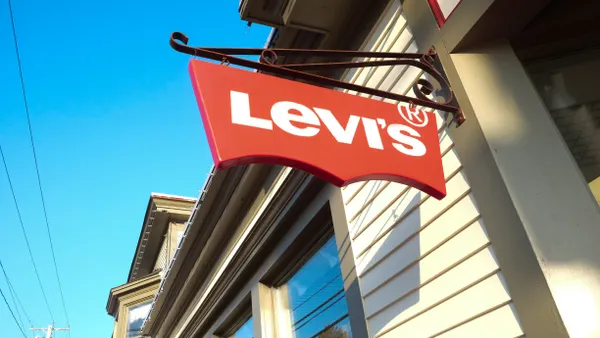Dive Brief:
- More than 15 years after its founding, ThredUp is testing out peer-to-peer selling, CEO James Reinhart announced on an earnings call Monday. The offering, which ThredUp has worked on for more than a year, is currently in a closed beta phase.
- Reinhart said he’s been thinking on this strategy “for many years” and intends to solve a number of problems peer-to-peer marketplaces generally run into, including low-quality items, unverified sellers and high seller fees. Peer-to-peer items will be available to shop alongside ThredUp’s consignment options online or separately if a shopper prefers.
- The announcement comes as ThredUp’s revenue soared 34% in Q3 to $82.2 million. Losses narrowed significantly in the period, with net loss coming in at $4.2 million compared to $24.8 million a year ago. Active buyers and orders grew 26% and 37%, respectively.
Dive Insight:
With its strongest year-over-year growth in nearly four years, ThredUp has outlined its next big growth opportunity in direct selling. Specifically, ThredUp will focus on casual sellers who have been “crowded out” of other platforms.
“The fact is that this is a big market, and we believe it's mostly broken,” Reinhart said of peer-to-peer models.
ThredUp intends to fix some of the model’s challenges in its own approach. That includes avoiding low-quality items by vetting sellers in advance, connecting the number of items a seller can list to their success as a seller and charging no listing fees for sellers. ThredUp will also give peer-to-peer sellers access to tools for merchandising, photography and product listing.
“We've heard consistently for some time how many sellers are sending some stuff to ThredUp but then selling high-quality stuff on other platforms, specifically peer-to-peer platforms,” Reinhart said. “And so in the research that we did, we found there was really a compelling opportunity to centralize all of the sellers' needs and give them that flexibility to do both.”
Reinhart said ThredUp will invest in seller verification and product quality more than other peer-to-peer platforms to ensure the marketplace doesn’t become rife with fraud. And while ThredUp won’t charge listing fees to sellers, it does see other ways to monetize the platform. Specifically, transactions will be monetized and buyers will pay part of that fee as well. In the long term, sellers may also have to subscribe to get access to the suite of listing tools ThredUp is currently offering, which includes the ability to use AI to create compelling product imagery.
Returns is another place ThredUp believes it can differentiate itself given its deep supply chain infrastructure and ability to resell returned items. Currently, the plan is for returns to be funded in part by buyers, who will effectively have to buy insurance on their purchase in order to return it.
Asked about profitability challenges at other platforms like Poshmark and Mercari, Reinhart said ThredUp has an opportunity to do things better.
“Frankly, there's been very little innovation and product work done by a bunch of these other peer-to-peer platforms,” Reinhart said. “I think they've lost the plot a little. And so I actually think we can build something that's far superior to what's out there today.”
William Blair analysts led by Dylan Carden speculated that direct selling could be a distraction from ThredUp’s core business, like European resale site Remix that it ended up selling off last year, but noted it should also have “synergies” with the company’s other offerings. As ThredUp continues to invest in AI tools, having more inventory lends itself to the type of curation generative AI can provide, Carden said.
“As a result, we reiterate the notion that of all our companies, thredUp has an immediate and powerful use-case for AI that puts it ahead of peers,” Carden wrote, saying a direct business will add to this advantage. “Apart from the technology, the real advantage here is in breadth of inventory that turns quickly, allowing for ever-changing, nearly endless capacity to provide highly curated newness through these tools.”















